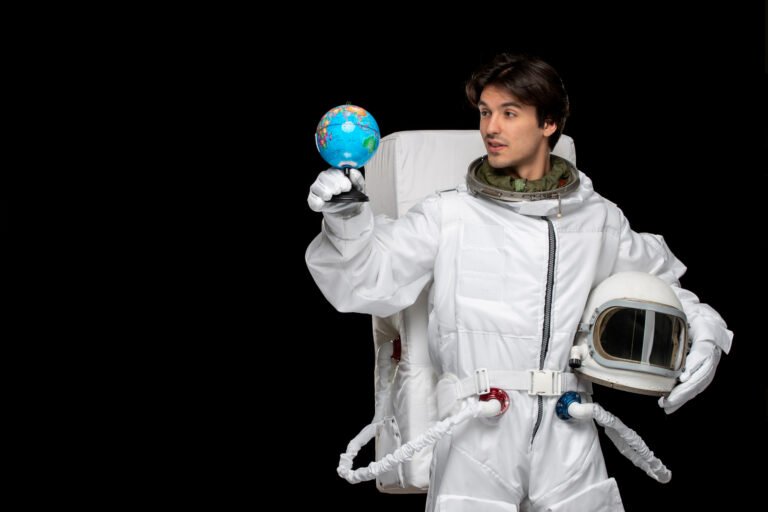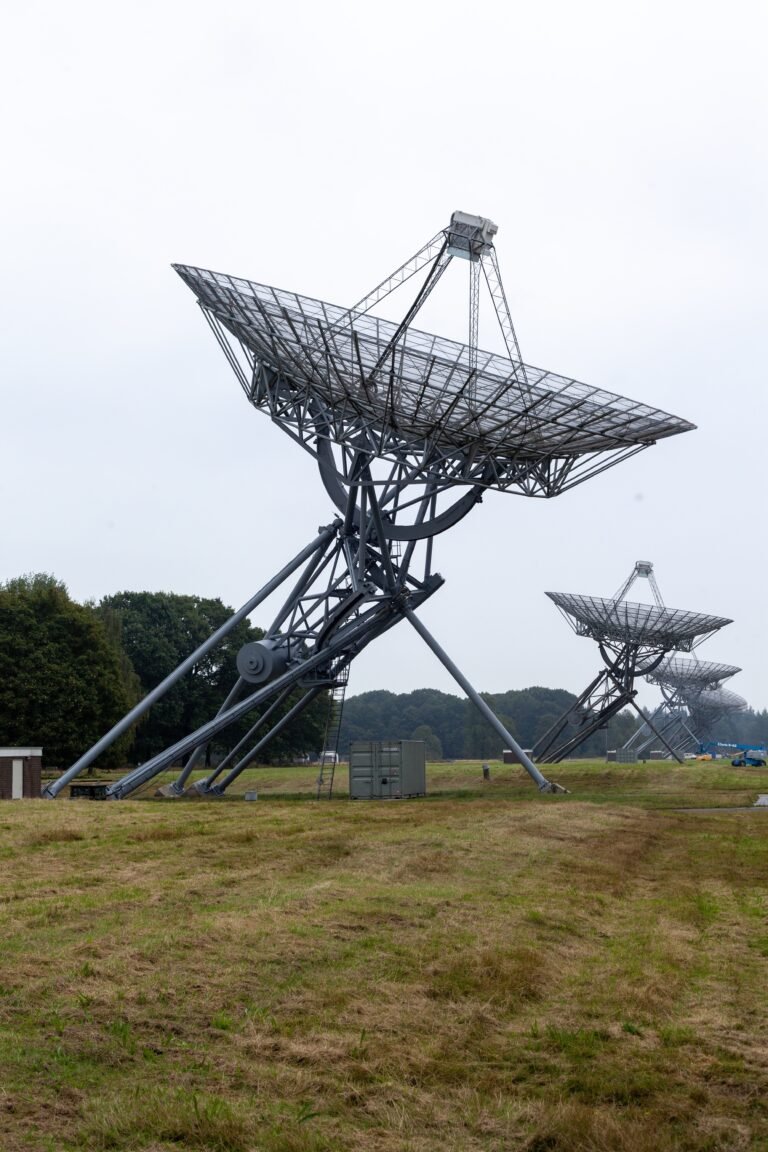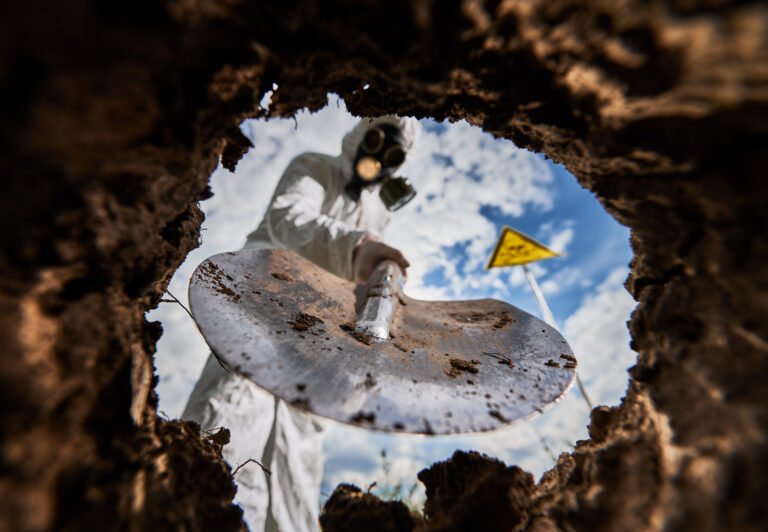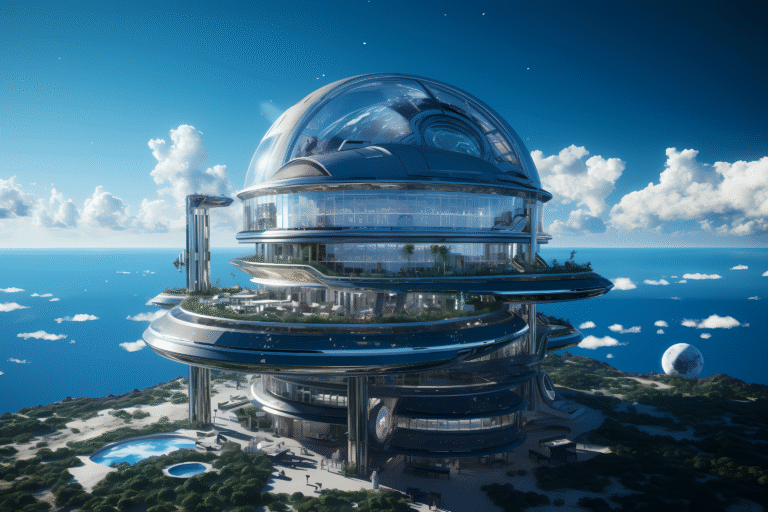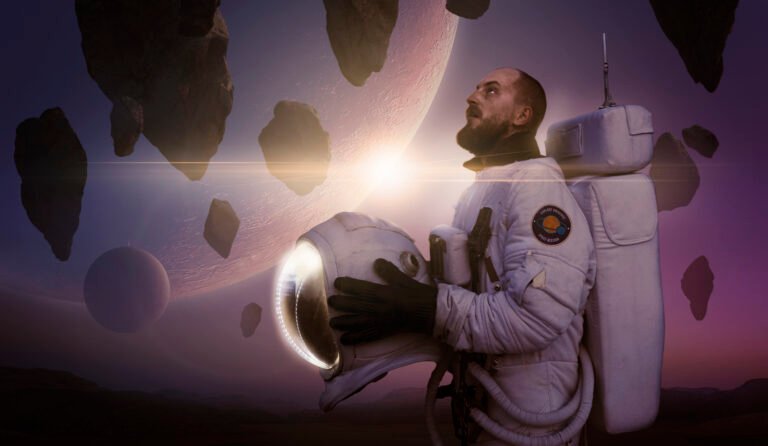7 Real Companies Selling Space Travel Experiences Right Now

Space Travel Experiences: If you’ve ever daydreamed about seeing Earth’s curvature, floating in microgravity for a few minutes, or sipping Champagne while a balloon gently lifts you above 100,000 feet, you’re not alone. The commercial space industry matured fast: a handful of real companies are now selling space travel experiences today — from quick suborbital hops to multi-day orbital missions and luxury balloon rides to the edge of space. Below you’ll find a practical, up-to-date guide to seven companies actively offering bookings or paid reservations, what each experience feels like, pricing and booking realities, safety/training expectations, and tips to choose the best trip for you. (Focus word: space travel experiences.)

Table of Contents
Quick comparison table — at a glance
| Company | Experience type | Vehicle | Typical altitude | Typical duration | Approx. price / deposit | Booking status |
|---|---|---|---|---|---|---|
| Virgin Galactic | Suborbital spaceplane | VSS/Delta class (spaceplane) | Above Kármán line (~80–100 km depending on definition) | Minutes of weightlessness; whole trip several hours | Historically ~$450k–$600k (varies); reservations open | Selling/reservations; program updates ongoing. Virgin Galactic+1 |
| Blue Origin | Suborbital rocket | New Shepard | Above Kármán line (~100 km) | Minutes of weightlessness; entire flight ~1 hour | Price not publicly fixed on site (reserve form available) | Seats available to buy/reserve. Blue Origin+1 |
| SpaceX (private missions) | Orbital/private missions | Crew Dragon aboard Falcon 9 | Low Earth orbit (orbital) | Days to weeks | Charter/mission pricing varies widely (private missions arranged via partners) | Chartered by companies (Axiom) and private buyers. SpaceX+1 |
| Axiom Space | Orbital private missions & commercial station developer | Crew Dragon (to ISS) / Axiom Station (future) | ISS orbit (LEO) | ~10–14 days typical for private missions | Charter mission seat cost varies (brokered); missions launched in 2023–2025 | Active missions; building Axiom Station. Axiom Space+1 |
| Space Adventures | Orbital tourism broker | Historically Soyuz; brokers various vehicles | Orbital (ISS/other) | Days to weeks | Historically multi-million USD for orbital trips; tailored packages | Broker arranging private missions and training. Space Adventures |
| Space Perspective | High-altitude balloon (Spaceship Neptune) | Balloon + pressurized capsule | ~100,000 ft (~30 km) | ~6 hours (ascent/float/descent) | ~$125,000 per seat (deposit options shown) | Selling reservations; completed test flights. Space Perspective+1 |
| World View | Stratospheric balloon (Explorer) | High-altitude balloon + capsule | ~23 miles (~37 km) | ~6–8 hours | ~$50,000 per seat (deposit available) | Selling reservations; pre-sales strong. World View+1 |
Who’s actually selling space travel experiences (the 7 companies)
1) Virgin Galactic — the spaceplane suborbital experience
Virgin Galactic sells tickets for short suborbital flights aboard its air-launched spaceplane system (mothership + spaceplane). Passengers experience a high-altitude climb under plane tow, then release and rocket to edge-of-space altitude where a few minutes of weightlessness and Earth-curvature views occur before a plane-style glide landing. The company has run commercial flights and continues to accept reservations while refining newer spaceplane variants (and pricing). If you want the cinematic spaceplane experience — runway takeoff, rocket ride, glide landing — Virgin Galactic is the best match. Virgin Galactic+1
What to expect: brief training, medical screening, several hours of the flight day at the spaceport, and a short but intense few minutes of weightlessness. Virgin Galactic
2) Blue Origin — New Shepard vertical suborbital hops
Blue Origin’s New Shepard vertical rocket provides suborbital flights with several minutes of weightlessness. Blue Origin sells and allows reservation of seats via its booking portal; many flights have already flown as demonstration and commercial missions. The New Shepard system emphasizes a relatively simple, automated rocket and capsule reusability. If you prefer a classic vertical launch and capsule experience (think Apollo capsule vibes but for minutes), Blue Origin is a go-to. Blue Origin+1
What to expect: capsule ascent under rocket boost, several minutes of weightless cabin time with panoramic windows, then safe capsule landing under parachute.
3) SpaceX — orbital charters and custom missions (the heavy hitter)
SpaceX operates the Crew Dragon capsule and Falcon 9 launch vehicle that make orbital private missions possible today. SpaceX typically designs and flies the hardware; seats for private orbital space travel experiences are often brokered or chartered through partners (Axiom Space, Space Adventures, private investors) rather than sold directly to casual buyers on a public price sheet. For real orbital flights — circling Earth for days to weeks — SpaceX is the primary operator enabling those trips. SpaceX+1
What to expect: full mission profile with launch, orbital operations (possibly visiting ISS or private stations), mission training, and multi-day stays. These are complex, expensive, and require serious medical and training commitments.
4) Axiom Space — private astronaut missions to the ISS and a commercial station roadmap
Axiom Space is a leading broker/operator that arranges private astronaut missions to the ISS using SpaceX Crew Dragon; it also builds its own commercial station (Axiom Station). Axiom has flown multiple private missions (Ax-2, Ax-3, Ax-4 etc.) and continues to run end-to-end human spaceflight services, scientific payloads, and long-term commercialization of LEO. If you want the “stay in space” experience — research, experiments, long-duration views — Axiom is the clear choice. Axiom Space+1
What to expect: mission training, multi-week stays or shorter visits, collaboration on science or publicity objectives, and thorough medical clearance.
5) Space Adventures — the broker that made orbital tourism happen
Space Adventures is a veteran broker that historically arranged Soyuz flights for private orbital tourists and continues to market private orbital experiences (and other specialized options). They create tailored, fully supported packages that have included ground training and orbital stays. While geopolitical shifts changed some pathways (e.g., Soyuz availability), Space Adventures remains an active broker exploring alternate vehicles and mission architectures. If you want a tailored, all-in private orbital package, this is the company to talk to. Space Adventures
6) Space Perspective — luxury balloon to the edge of space (Spaceship Neptune)
Space Perspective uses a giant high-altitude balloon to lift a pressurized capsule (Spaceship Neptune) to about 100,000 feet. The trip is long (multi-hour) and framed as a luxury, low-G experience with panoramic views, a “space lounge,” and a gentle ocean splashdown. Space Perspective has completed major uncrewed test flights and sells seats (listed at ~$125,000/seat on their reservation page), with many reservations in place. It’s marketed as a calm, luxury space travel experience with a focus on comfort and accessibility. Space Perspective+1
7) World View — stratospheric balloon flights to the edge of space (~23 miles)
World View offers stratospheric balloon flights that reach the stratosphere (tens of kilometers up) for multi-hour experiences; its public materials show a price point around $50,000/seat with deposit options. World View’s approach emphasizes lower cost compared with rocket flights, and an accessible “edge-of-space” perspective for people who want sweeping curvature and the dark sky without the rocket ride. World View+1
How these space travel experiences differ (key decision points)
- Altitude & “real space” — Rocket flights (Virgin Galactic, Blue Origin, SpaceX/Axiom) cross or reach above the Kármán line (~100 km) or the company’s defined boundary and provide real microgravity. Balloon flights (Space Perspective, World View) go to the stratosphere (~20–30 km) — spectacular but technically suborbital “edge-of-space.” Space Perspective+1
- Duration & comfort — Rockets: minutes of weightlessness; balloons: several hours of gentle ascent and extended viewing. Rockets are intense; balloons are luxurious and calm. Blue Origin+1
- Training & medical clearance — Orbital trips (SpaceX/Axiom/Space Adventures) require months of training and thorough medical checks. Suborbital and balloon trips typically require shorter medical checks and a few hours to days of training. Axiom Space+1
- Cost — Balloon trips (World View ~$50k; Space Perspective ~$125k) are far cheaper than suborbital rockets or orbital missions (which can be $250k–multi-million+). Exact pricing changes quickly. World View+1
Booking, deposits, and the reality of waiting lists
- Deposits and refundable/nonrefundable terms: Many companies accept small refundable deposits (Space Perspective shows refundable deposit options; World View has a $500 deposit option) and then tiered payment plans. For rockets and orbital charters, deposits or full charters are negotiated. Always read refund and schedule-change policies. Space Perspective+1
- Wait times: Popular companies have bookings years out for certain launch windows. Balloon companies often have more flexible scheduling and lower crowds, but are also weather-dependent. Space+1
- Hidden costs: travel to spaceport, accommodation, mandatory pre-flight training, and medical exams are sometimes extra.
Safety, regulation, and who inspects these flights
Commercial human spaceflight in the U.S. is regulated by the Federal Aviation Administration (FAA) for launch and reentry; other countries have their own oversight. Companies publish safety protocols, and many flights include former NASA personnel or experienced test pilots in their teams. Orbital missions generally follow strict international safety and mission integration regimes (especially when docking to the ISS). Always ask companies for their safety records and what insurance/waivers you sign. SpaceX+1
Tips & tricks before you book a space travel experience
- Decide your “why” — Are you after weightlessness, the prestige of an orbital mission, or long, luxury viewing? Your reason narrows your options.
- Budget beyond the ticket — training, travel, medical tests, gear, and possible delays can add up.
- Ask about insurance & medical coverage — see if the company helps arrange travel insurance or medical checks.
- Check cancellation/reschedule policies — weather and technical delays are common. Know refund options.
- Book through official channels or trusted brokers — to prevent scams, use company sites or established brokers (Axiom, Space Adventures). Space Adventures+1
What to expect on the day: a short checklist
- Bring ID and medical forms (filled).
- Arrive at the spaceport early. Expect media/press (some flights include VIP events).
- Training and safety briefings are often the same day or a day prior for suborbital; orbital trips require extended training blocks.
- Clothes: companies will advise — many provide flight suits; for balloon flights, dress for comfort and a cool capsule.
- Onboard experience: take photos through windows, enjoy live commentary, savor the view (and the silence). Virgin Galactic+1
The future: more companies, bigger markets, and private space stations
The industry is moving fast: SpaceX, Axiom and others are building commercial station capacity, while balloon companies aim to make the experience more accessible. Expect prices to evolve, more launch operators, and themed experiences (e.g., luxury dinners at edge-of-space). If you want to be an early adopter, plan finances and medical checks early — the market will broaden, but early flights retain collector and prestige value. Axiom Space+1
FAQs (5–7) — common booking questions about space travel experiences
Q1: Are balloon trips “real” space travel?
A: Balloon trips (Space Perspective, World View) take you to the stratosphere (tens of km up) with incredible views and a near-space experience, but they don’t go into orbital space. They’re often marketed as “edge-of-space” and are an excellent, lower-G, more affordable option. Space Perspective+1
Q2: Which option gives you real microgravity?
A: Suborbital rocket flights (Virgin Galactic, Blue Origin) and orbital missions (SpaceX/Axiom) provide real microgravity. Balloon flights do not produce continuous microgravity. Blue Origin+1
Q3: How long is training?
A: Suborbital passengers often have brief training sessions (hours to days). Orbital private astronauts undergo weeks to months of training. Brokers like Axiom and Space Adventures provide mission-specific training packages. Axiom Space+1
Q4: Can anyone buy a seat?
A: Many companies accept reservations for anyone who can pass medical checks and afford the price. Orbital missions require stricter medical and training commitments. Balloon trips and some suborbital flights are more accessible. Space Perspective+1
Q5: How safe is commercial spaceflight?
A: Operators follow rigorous test programs, regulatory oversight, and incremental flight test regimes. Human spaceflight is inherently riskier than commercial air travel, so read safety records and ask operators about emergency procedures and insurance. SpaceX+1
Q6: Are refunds given for long delays?
A: Policies vary. Balloon companies usually have clearer reschedule/refund terms; rocket/orbital flights depend on mission scheduling and charters. Confirm terms on the company booking page. World View+1
Extra resources & related links (quick list)
- Virgin Galactic — official experience page. Virgin Galactic
- Blue Origin — New Shepard booking/reserve page. Blue Origin+1
- Axiom Space — missions & commercial station updates. Axiom Space+1
- SpaceX — updates & private missions page. SpaceX
- Space Adventures — private orbital brokerage. Space Adventures
- Space Perspective — Spaceship Neptune reservations & pricing. Space Perspective+1
- World View — stratospheric balloon reservations & pricing. World View+1
Conclusion
Commercial space travel experiences are no longer fantasy: whether you want minutes of microgravity on a rocket, days in low Earth orbit on an orbital mission, or a serene luxury balloon ride to 100,000 feet, real companies are selling those experiences today. Choose by experience type (thrill vs. comfort), altitude, cost, and your training/medical willingness. Book via official channels, read the fine print, and get ready — the sky (and a little beyond it) is now a market you can actually buy a ticket for.

